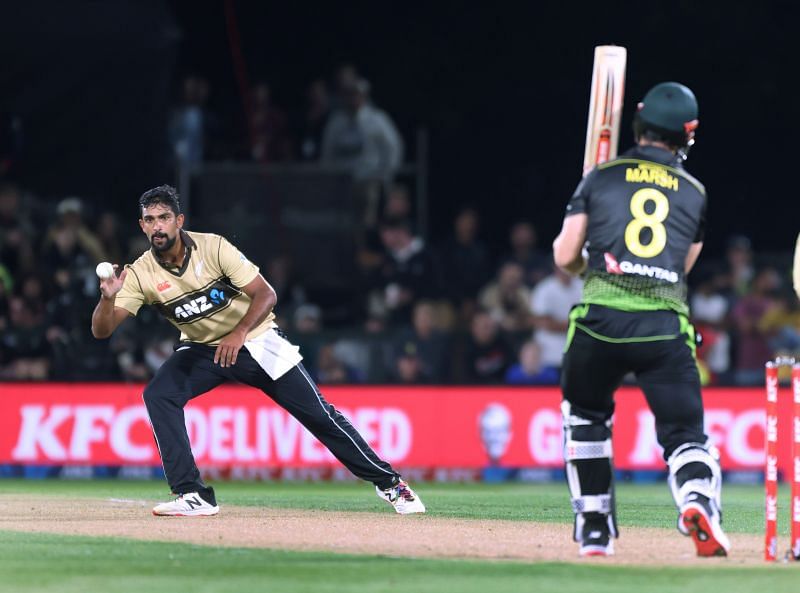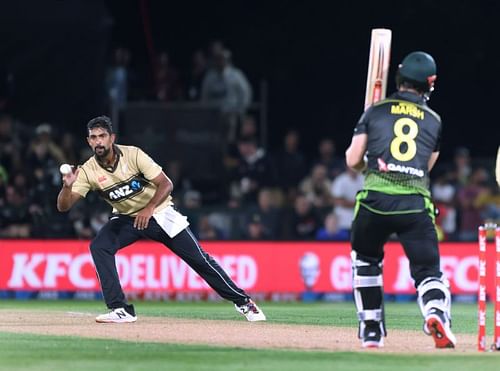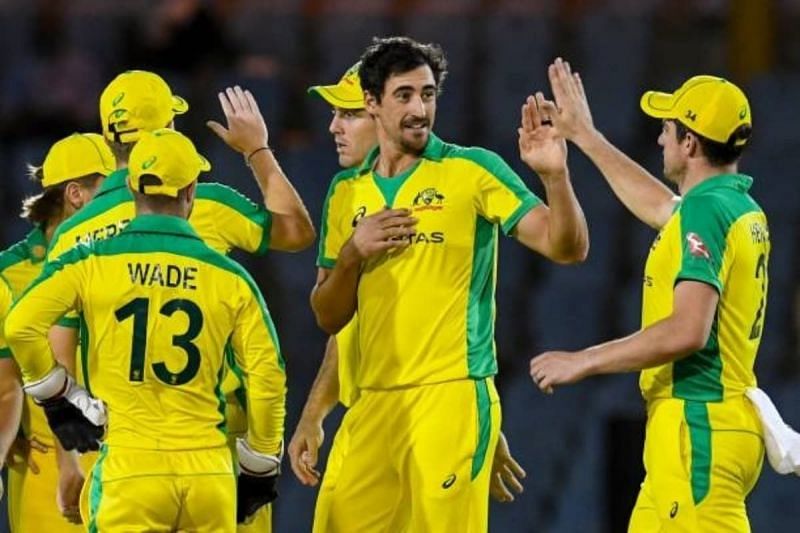
What Australia needs to do to fix its T20 problems

It's no secret that Australia have never really found their bearings when it comes to the T20 format. They have zero T20 World Cup trophies to show for their efforts and just one appearance in a final in 2010. For a proud cricketing nation, it is a disturbing record. In contrast, they've dominated the ODI World Cups, taking the trophy home five times, which further highlights Australia's struggles in the shortest format.
Australia's recent series defeat against the West Indies by a 4-1 margin just laid bare their inadequacies in the T20 format. While their batsmen just weren't consistent or explosive enough, the Australian bowlers seemed to be out of rhythm for the most part. Mitchell Marsh was the lone bright spot for Australia, scoring 219 runs at a strike rate of 152.08, while also picking up eight wickets.
The fact that several Australian senior players weren't in the squad for various reasons definitely hurt them, and so, even with just a few months to go for the T20 World Cup, they can easily overcome their issues and turn into serious contenders. On that note, let's look at what has gone wrong for Australia in T20Is so far and how it can be rectified.
Absence of key players
At their best, David Warner and Glenn Maxwell will walk into most T20 teams any day. Their absence from the tour of the West Indies did seriously hamper the Australian batting line-up.
Steve Smith, who is currently nursing an elbow injury, isn't regarded as highly as the other two gentlemen when it comes to T20s. But he plays a crucial role as an anchor at No.3, one that could come in handy on UAE pitches that could tire him out as the tournament progresses, owing to the additional strain of playing the IPL on similar tracks right before the World Cup.
When Smith steps out to play T20 cricket, he tends to forget that he's one of the best batsmen in the world, and ends up trying far too many things to fit in. He will do well to look back on his successful IPL campaign with Rising Pune Supergiant in 2017, when he looked to time the ball and play it through awkward angles to find gaps at will, instead of trying to bludgeon and slog everything that came his way.
Marcus Stoinis is another player missing from the squad at the moment and he could have a big impact as a finisher. Aaron Finch, the Australian limited-overs captain, played the series against West Indies. But he now faces a race against time to be fit for the World Cup after suffering a knee injury. His presence at the top of the order is crucial to Australia's chances of going deep in the tournament.
Speaking of Australia's bowling attack, most of their frontline options were available in the Caribbean. So the only major boost they could receive now would be the return of Pat Cummins. They'll have to use him smartly, though. His role seems ill-defined at the Kolkata Knight Riders.
Ideally, he should be locked in as a powerplay specialist, bowling two or even three overs, and attacking the batsmen when the field restrictions are on. He can then come back for another spell in the middle overs.
Jhye Richardson, meanwhile, is a fantastic prospect with a bright future and his return could help add depth to the fast bowling resources.
With Mitchell Starc gradually finding form and Josh Hazlewood growing into his role in the T20s, Australia could have a potent fast bowling attack. Adam Zampa and Ashton Agar seem to be locked in as the leading spin options, with Mitchell Swepson in tow as a good backup.

Australia's middle-order muddle
Australia's middle order was a bit of an issue for them even with all the senior players around. Warner, Finch, Smith and Maxwell form a dangerous top four, but beyond that, there has been quite a bit of uncertainty. The Aussies have been shuffling the middle order far too often.
Matthew Wade has mostly played as an opener whenever he's been given a chance in the absence of regular top-order batsmen. But if he's going to be Australia's first-choice wicket-keeper at the upcoming T20 World Cup, he will probably only get to bat at No.5 or lower.
Australia should start using him in that position as soon as possible to get him acclimatized to the demands of batting in the middle order. Another option would be to pick Josh Inglis as the 'keeper. He hasn't played for Australia yet and isn't in the squad for the next series against Bangladesh. But his talent is unquestionable and he should be able to fit into the middle order better than Josh Philippe, who is the other wicket-keeping option in the Australian squad at the moment.
Mitchell Marsh played at No.3 in the series against West Indies and did exceptionally well, as mentioned earlier. However, he too will find it difficult to hold on to that spot once the seniors return. So Australia might be better served playing him at No.6 in the games remaining before the World Cup.
Ashton Agar has been a decent performer with the ball in recent times, but his lack of output with the bat at No.7 has been problematic. If he can step up with the bat, Australia will find that elusive balance they need for the World Cup.
The road ahead
Australia will now play a five-match T20I series against Bangladesh, which starts on the 3rd of August. These matches are the only T20Is left for the Aussies before the World Cup. If Steve Smith and Aaron Finch don't recover in time, Australia will find it very difficult to form a solid top order.
All the other senior players mentioned above will be absent for this tour as well. This will be Australia's last opportunity to have a look at their backup options and eventually finalize their World Cup squad.